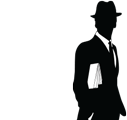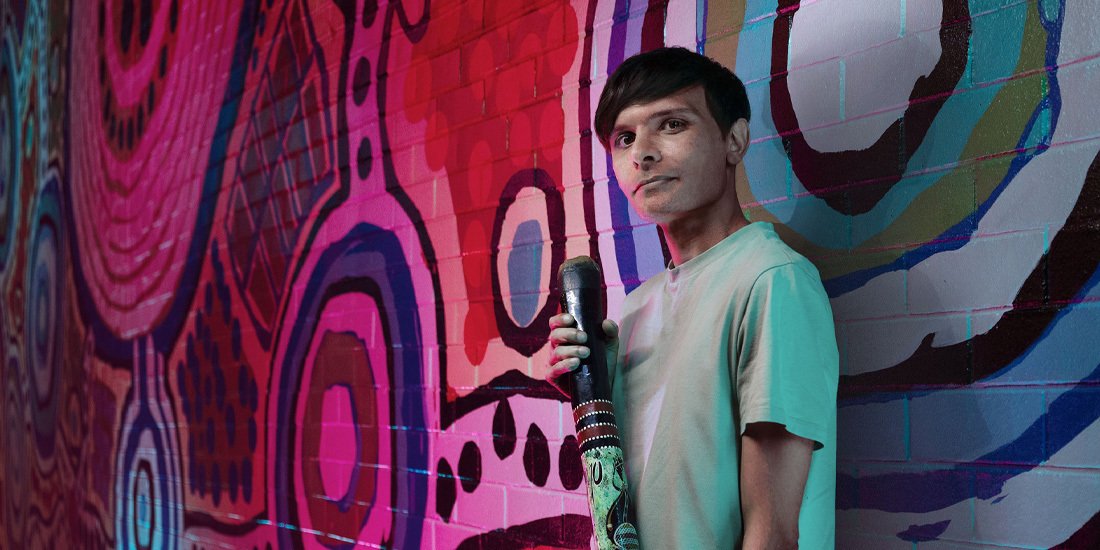Shaun Davies, linguist and Logan Proud City ambassador, Yugambeh Museum
Indigenous communities engaging with modern technology is key to giving their language and culture the rightful place they deserve in the modern age ...
The world boasts many languages. Some are widely spread and known, many are on the cusp of being forgotten entirely. Language is not only a key method of communication, but also a way of understanding the culture and history of an entire group of people. Shaun Davies is a linguist with a keen interest in endangered languages. One such language he has dedicated his career to preserving and understanding is his own. Shaun is a Yugambeh man and one of the traditional custodians of the land that stretches from Logan City to Tweed City and out as far as the Scenic Rim. The Yugambeh language is comprised of several dialects, many of which have, over time, become at risk of disappearing. Shaun’s work documenting Yugambeh history and preserving the language at the Yugambeh Museum in Logan has not only helped save Yugambeh culture from vanishing, but has led to a renewed interest in the language thanks to a series of educational and cultural exchange programs and technology-based initiatives. We spoke to Shaun, who is also an ambassador for Logan’s Proud City campaign, about his work and the wonderful aspects of Yugambeh language.
To start, we’d love to know more about where your interest in languages came from – can you recall what initially inspired you to pursue a career as a linguist?
In year ten, my grade went to a career’s expo at Brisbane Showgrounds. I ended up captivated by the stand for YFU (Youth For Understanding) – an exchange program I highly recommend to any young person interested. I went to France for three months over the Australian summer, where I fell in love with languages and teaching language (the principal had asked me to join the English classes for the first two weeks). Returning to Australia I told my nan, Joan, and her sister, Aunty Edi, about my newfound love for language teaching and how I wanted to help revive endangered languages. To which they responded “What about our lingo?”, and the journey began!
You currently work as language research officer at the Yugambeh Museum, Language and Heritage Research Centre, helping piece together Indigenous history dating back to before the arrival of Europeans. How did you first get involved with the museum and can you give us some insight on what your job entails?
After the prompting from my nan and her sister, we sat down writing out language words and my mum mentioned the Yugambeh Museum, she had previously done a job program there constructing the outdoor area. I went in and met Pat and Rory O’Connor and from there the relationship grew. In my job I have to wear many hats – thinking about the oral knowledge my nan and other family members have given me, while maintaining an academic unbiased approach to what is not just linguistics and languages, but also sociology and people. You can’t separate a language from its community and your understanding of one is limited by your understanding of the other.
From a linguist’s and storyteller’s perspective, what would you say are some of the most beautiful and unique aspects of the Yugambeh language?
Yugambeh is one of the most unique languages, even in the Australian context. We have ‘gender’ for nouns, but unlike French were something is arbitrarily masculine or feminine, we
have human, animal, arboreal (plant-based), and neutral (objects) inflections. In many languages, like English, people use tenses predominantly (i.e., past, present, future), while Yugambeh predominantly marks what is called ‘aspect’ – tense indicates where an event sits in time, while aspect indicates how an event is related to the flow of time. Yanbalehla simply means ‘walking’, the action is continuous, we do not mark the was/is/will be, this comes from context. All these beautiful aspects make Yugambeh language quite different (and difficult!) to translate.
How has the process of preserving culture and language through documentation and education strengthened your own understanding of, and connection to, your Yugambeh heritage?
Preserving and revitalising a living language and culture requires working with living people, and this aspect of my work has enriched my life in more than one way. I am deeply networked with community, having positions in Native Title, Cultural Heritage, and our Yugambeh Land Enterprises. Through all that, I meet the families and community that will be the ones to restore our Yugambeh language to a thriving a language.
You’re a big proponent of using digital and social media as a way to help keep Indigenous languages alive for future generations – can you give us some examples of how you’ve engaged with technology for this purpose?
When I first started at the museum, one of my first jobs was the expansion of the Yugambeh App to include additional languages. Since then I’ve worked alongside Google, Snapchat, and major community events like the Commonwealth Games, to engage more in creating digital technology, videos, and other tools that encourage the use of language. I’ve been taught that technology has a strong place in modern culture, like the campfire in the old days. Indigenous communities engaging with modern technology is key to giving their language and culture the rightful place they deserve in the modern age.
You’re an ambassador for Logan’s Proud City campaign alongside a bunch of other inspiring locals. What are some things that you appreciate most about the city?
Logan is a diverse city with plenty to offer and a welcoming environment. It’s a multicultural and multilingual place that I think speaks to the Australian dream. Here, I have seen refugees fresh from war-torn hells, Aboriginal people working from garages, and everyday Aussies who have gone on to do and make great things; something I believe was capable because of what this city has to offer. The affordability compared to Brisbane and Gold Coast, while centrally located between the two, with a population of willing and able people that are all working for a better tomorrow.
In what ways are you excited to see the city grow and evolve in the future?
I’m excited for the next decade – especially with the lead up to the Olympics – and I think Southeast Queensland in general is looking to grow in new ways. I am excited to see the developments locally in culture and language, not just Indigenous. Working with Logan, I see the thirst for growth and for wider community engagement, and I know that the many ideas currently boiling in this beautiful pot are going to brew into something truly amazing.
Finally, we love to know what inspires people and makes them tick. Is there anything you’ve found stimulating outside of your work, be it creatively, emotionally or philosophically?
I feel that much of what I do is ‘work’ in one way or another, because everything I do, I do for my community. I love engaging with other volunteer work in community, though, as it challenges me creatively to apply my cultural knowledge and skills to practical circumstances. In my free time, I’m a bit of a fan of the Star Trek: Discovery series. The politics of the alien civilisations and their differing cultures, the ‘xeno-linguistics’ (Alien linguistics), and central themes of community and science I find thought-provoking and inspiring.

